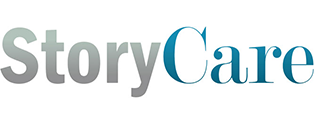Archive for the ‘Student Guides’ Category
Friday, September 26th, 2014
145
Student’s Guide – Are We Sure This Is Necessary?
Overview:
This story is about the fact that indwelling urinary catheters cause up to 80% of hospital-acquired infections, with 30% being unneeded in the first place, and how a nurse reviews a patient’s chart and challenges the catheterization.

Primary Learning Outcomes
After completing this lesson, the student will be able to:
- Describe the importance of assessing catheter use for each patient on a daily basis.
- Identify protocol for removing inappropriate Foley catheters.
- Explain how to document indications for urinary catheter use.

QSEN Pre-Licensure Competencies
The following QSEN competencies are addressed in this lesson:
- Evidence-Based Practice (EBP): Integrate best current evidence with clinical expertise and patient/family preferences and values for delivery of optimal health care.
Story Directions:
As you listen to and read the story, think about the things that you think the team members did well, and the things you think could lead to errors. Also, consider the questions below as you listen.
Reflection Questions:
- What does this story illustrate about the importance of assessing catheter use for each patient daily?
- What are the protocols for removing inappropriate Foley catheters? Were they implemented appropriately in this story?
- How could the indications for urinary catheter use have been better documented in this story? Why?
Posted in Pro ED Guides, Student Guides | No Comments »
Friday, September 26th, 2014
144
Student’s Guide – Putting Safety on the Line
Overview:
This story is about the importance of following protocols, particularly those pertaining to central venous catheters (CVCs). Prevention of CLABSI is mandated by legislation. Therefore, it is every team member’s responsibility to speak up when procedures are incorrectly performed.

Primary Learning Outcomes
After completing this lesson, you will be able to:
- List the five best practice components of the central line bundle for prevention of CLABSI.
- Describe how to apply a central line bundle to prevent CLABSI.
- Explain the importance of identifying and communicating deviations from CLABSI preventative best practices to team members using assertive language.

QSEN Pre-Licensure Competencies
The following QSEN competencies are addressed in this lesson:
- Evidence-Based Practice (EBP): Integrate best current evidence with clinical expertise and patient/family preferences and values for delivery of optimal health care.
- Safety: Minimizes risk of harm to patients and providers through both system effectiveness and individual performance.
Story Directions:
As you listen to and read the story, think about the things that you think the team members did well, and the things you think could lead to errors. Also, consider the questions below as you listen.
Reflection Questions:
- What are the five best practice components of the central line bundle for prevention of CLABSI?
- What can we do to ensure that a central line bundle is applied to all patients with central lines?
- What can you do to ‘stop the line’ if central line bundle protocols are not followed by any member of the team?
Posted in Pro ED Guides, Student Guides | No Comments »
Friday, September 26th, 2014
143
Student’s Guide – Got Clutter?
Overview:
This story is about facility cleanliness. It is a key patient and family satisfaction performance indicator. Facilities that are cluttered, unorganized, and generally untidy form negative patient perceptions. This could also impact safety, efficiency, and organizational effectiveness.

Primary Learning Outcomes
After completing this lesson, you will be able to:
- Examine the effect a cluttered facility has on the patient experience.
- Explain and adopt strategies and actions to eliminate clutter and create a consistently clean and inviting atmosphere for patients, families, and visitors.

QSEN Pre-Licensure Competencies
The following QSEN competencies are addressed in this lesson:
- Safety: Minimizes risk of harm to patients and providers through both system effectiveness and individual performance.
- Patient-Centered Care: Recognize the patient or designee as the source of control and full partner in providing compassionate and coordinated care based on respect for patient’s preferences, values, and needs.
Story Directions:
As you listen to and read the story, think about the things that you think the team members did well, and the things you think could lead to errors. Also, consider the questions below as you listen.
Reflection Questions:
- What do you believe was the effect of the state of the facility in this story on its patients?
- Do you agree with Mary’s assessment of the hospital, despite Dr. Samuel’s descriptions? Why or why not?
- What could the hospital do to eliminate clutter and create a consistently clean and inviting atmosphere for patients, families, and visitors?
Posted in Pro ED Guides, Student Guides | No Comments »
Friday, September 26th, 2014
142
Student’s Guide – Teamwork Starts Here
Overview:
This story is about the role senior leadership plays in effective teamwork. A top-down and control leadership style among senior leadership teams creates a climate where members don’t feel respected or empowered to perform, whereas psychological safety creates trust among all teams.

Primary Learning Outcomes
After completing this lesson, you will be able to:
- Describe why establishing norms for the conduct of the leadership team so that all members are empowered to speak up about lapses in professional conduct is important to achieving quality patient care.

QSEN Pre-Licensure Competencies
The following QSEN competencies are addressed in this lesson:
- Teamwork and Collaboration: Function effectively within nursing and inter-professional teams, fostering open communication, mutual respect, and shared decision-making to achieve quality patient care.
Story Directions:
As you listen to and read the story, think about the things that you think the team members did well, and the things you think could lead to errors. Also, consider the questions below as you listen.
Reflection Questions:
- What can members of the leadership team do to hold each other accountable for professional conduct?
- What kind of environment was created by the CEO? Why was his approach detrimental to the team?
Posted in Pro ED Guides, Student Guides | No Comments »
Friday, September 26th, 2014
141
Student’s Guide – Code of Silence
Overview:
This story highlights the importance of a nonjudgmental culture. Every human makes mistakes or poor decisions. A culture of denial, shame, and fear of litigation prevents providers from admitting and discussing mistakes openly, or using them to learn and improve.

Primary Learning Outcomes
After completing this lesson, you will be able to:
- Identify existing norms and beliefs within a culture related to organizational response to errors.
- Generate strategies, methods, and practices for open sharing, resolution, and learning from errors.
- Describe the importance of adopting organizational practices to care for the caregiver who has made a mistake or medical error.

QSEN Pre-Licensure Competencies
The following QSEN competencies are addressed in this lesson:
- Evidence-Based Practice (EBP): Integrate best current evidence with clinical expertise and patient/family preferences and values for delivery of optimal health care.
- Teamwork and Collaboration: Function effectively within nursing and inter-professional teams, fostering open communication, mutual respect, and shared decision-making to achieve quality patient care.
Story Directions:
As you listen to and read the story, think about the things that you think the team members did well, and the things you think could lead to errors. Also, consider the questions below as you listen.
Reflection Questions:
- How did Emily’s existing norms and beliefs influence her decisions in the story? What could the hospital do to change them?
- How does this story illustrate the importance of fostering open communication in the healthcare workplace?
- Why is it important to reach out to caregivers who have made a mistake or medical error?
Posted in Pro ED Guides, Student Guides | No Comments »
Friday, September 26th, 2014
140
Student’s Guide – Sailing on a Healing Tide
Overview:
This story is about the importance of listening for understanding. The messages we communicate come across in both verbal and non-verbal ways. We must be aware of the messages we are sending, and must decide if those are the ones we want to be sending.

Primary Learning Outcomes
After completing this lesson, the student will be able to:
- Identify and describe the inadvertent or non-verbal messages we may be sending to patients through our behavior.
- Describe the importance of adopting a set of team norms and behaviors for the positive messages we want to be sending to our patients and families.

QSEN Pre-Licensure Competencies
The following QSEN competencies are addressed in this lesson:
- Patient-Centered Care: Recognize the patient or designee as the source of control and full partner in providing compassionate and coordinated care based on respect for patient’s preferences, values, and needs.
Story Directions:
As you listen to and read the story, think about the things that you think the team members did well, and the things you think could lead to errors. Also, consider the questions below as you listen.
Reflection Questions:
- What kinds of messages was Carl receiving from Dr. Samuels and Smitty? How did they affect his recovery?
- What’s one specific thing you could do to make sure you are sending a caring and compassionate message to your patients and families?
Posted in Pro ED Guides, Student Guides | No Comments »
Friday, September 26th, 2014
139
Student’s Guide – Nature to Nurture
Overview:
This story is about bullying and hazing practices often associated with a healthcare worker’s indoctrination. These practice cause both unnecessary stress and premature abandonment of the field, and often compromise both the satisfaction and safety of patients.

Primary Learning Outcomes
After completing this lesson, you will be able to:
- Evaluate and explain on-boarding practices that ensure proper supervision for safe, competent, and quality patient care.
- Describe the importance of adopting “no bullying, no hazing” policies and protocols.
- Clarify the responsibility of each team member in creating a climate of respect and professionalism for new team members.

QSEN Pre-Licensure Competencies
The following QSEN competencies are addressed in this lesson:
- Teamwork and Collaboration: Function effectively within nursing and inter-professional teams, fostering open communication, mutual respect, and shared decision-making to achieve quality patient care.
- Safety: Minimizes risk of harm to patients and providers through both system effectiveness and individual performance.
Story Directions:
As you listen to and read the story, think about the things that you think the team members did well, and the things you think could lead to errors. Also, consider the questions below as you listen.
Reflection Questions:
- What does this story illustrate about the importance of shared on-boarding practices?
- Explain how Karen and Alice failed to create a climate of respect and professionalism in this story.
- How did Kyrie and Alice, and the procedures in place at the hospital, fail to minimize the risk of harm to patients in this story? What should have been done instead?
Posted in Pro ED Guides, Student Guides | No Comments »
Friday, September 26th, 2014
138
Student’s Guide – The Pressure’s On
Overview:
Pressure ulcers are common in patients with spinal cord injuries due to lack of mobility. Evidence-based protocols for pressure ulcer prevention must be developed, trained, and followed across teams to prevent patient harm. Effective handoffs are essential to ensure continuity of care.

Primary Learning Outcomes
After completing this lesson, you will be able to:
- Describe the role of the nurse in pressure ulcer surveillance and skin assessment.
- Recognize and explain the importance of documenting and communicating steps to prevent pressure ulcers, especially during handoffs.
- Explain how to apply evidence-based measures to prevent the development of pressure ulcers.

QSEN Pre-Licensure Competencies
The following QSEN competencies are addressed in this lesson:
- Evidence-Based Practice (EBP): Integrate best current evidence with clinical expertise and patient/family preferences and values for delivery of optimal health care.
Story Directions:
As you listen to and read the story, think about the things that you think the team members did well, and the things you think could lead to errors. Also, consider the questions below as you listen.
Reflection Questions:
- What is the role of the nurse in pressure ulcer surveillance and skin assessment?
- What did this team do well in documenting and communicating their efforts to prevent Trevon’s pressure ulcers? What could they improve?
- What can we do to ensure that a pressure ulcer prevention plan is consistently documented, practiced and communicated, including the ‘why’ for patients and families?
Posted in Pro ED Guides, Student Guides | No Comments »
Friday, September 26th, 2014
137
Student’s Guide – Vigilance is Never In Vain
Overview:
This story highlights the importance of Venous Thrombosis Embolism (VTE) prevention protocols. Signs and symptoms of VTE are frequently silent and can lead to fatal pulmonary embolism. All team members are responsible for VTE.

Primary Learning Outcomes
After completing this lesson, you will be able to:
- Explain the importance of ensuring that patient order sets include a plan for VTE prophylaxis.
- Describe the necessity of re-assessing patients for VTE risk when their conditions or circumstances change (e.g. moving into post-operative phase).
- Develop a plan to communicate patient goals including VTE prophylaxis to all members of the multidisciplinary team.

QSEN Pre-Licensure Competencies
The following QSEN competencies are addressed in this lesson:
- Evidence-Based Practice (EBP): Integrate best current evidence with clinical expertise and patient/family preferences and values for delivery of optimal health care.
- Teamwork and Collaboration: Function effectively within nursing and inter-professional teams, fostering open communication, mutual respect, and shared decision-making to achieve quality patient care.

QSEN Teamwork & Collaboration Enrichment
TeamSTEPPS® Best Practice: Two Challenge Rule
Team Strategies to Enhance Performance and Patient Safety (TeamSTEPPS) is an evidence-based set of teamwork tools, aimed at optimizing patient outcomes by improving communication and teamwork skills among healthcare professionals.
Two Challenge Rule
It is important to voice your concern by advocating and asserting your statement at least twice if the initial assertion is ignored (thus the name, “Two-Challenge rule”). These two attempts may come from the same person or two different team members. The first challenge should be in the form of a question. The second challenge should provide some support for your concern. Remember this is about advocating for the patient. The Two-Challenge tactic ensures that an expressed concern has been heard, understood, and acknowledged.
Story Directions:
As you listen to and read the story, think about the things that you think the team members did well, and the things you think could lead to errors. Also, consider the questions below as you listen.
Reflection Questions:
- Explain the importance of developing checklists to ensure proper use of a VAP bundle.
- How can we help remind members of the team to elevate HoB in patients who are being ventilated?
- How does this story illustrate the importance of including family members as full partners in providing compassionate and coordinated care?
Posted in Pro ED Guides, Student Guides | No Comments »
Friday, September 26th, 2014
136
Student’s Guide – Heading in the Right Direction
Overview:
Lack of clear roles and responsibilities for Head of Bed (HoB) elevation reduces the likelihood that HoB is elevated to recommended angle to prevent ventilator associated pneumonia (VAP). All members of the team are responsible for initiating HoB elevation.

Primary Learning Outcomes
After completing this lesson, you will be able to:
- Describe the rationale for using a VAP bundle.
- Identify tools for reminding healthcare team members to elevate HoB in ventilated patients
- Describe the importance of establishing which team members are responsible for initiating HoB elevation.

QSEN Pre-Licensure Competencies
The following QSEN competencies are addressed in this lesson:
- Evidence-Based Practice (EBP): Integrate best current evidence with clinical expertise and patient/family preferences and values for delivery of optimal health care.
- Teamwork and Collaboration: Function effectively within nursing and inter-professional teams, fostering open communication, mutual respect, and shared decision-making to achieve quality patient care.
- Patient-Centered Care: Recognize the patient or designee as the source of control and full partner in providing compassionate and coordinated care based on respect for patient’s preferences, values, and needs.
Story Directions:
As you listen to and read the story, think about the things that you think the team members did well, and the things you think could lead to errors. Also, consider the questions below as you listen.
Reflection Questions:
- Explain the importance of developing checklists to ensure proper use of a VAP bundle.
- How can we help remind members of the team to elevate HoB in patients who are being ventilated?
- How does this story illustrate the importance of including family members as full partners in providing compassionate and coordinated care?
Posted in Pro ED Guides, Student Guides | No Comments »



